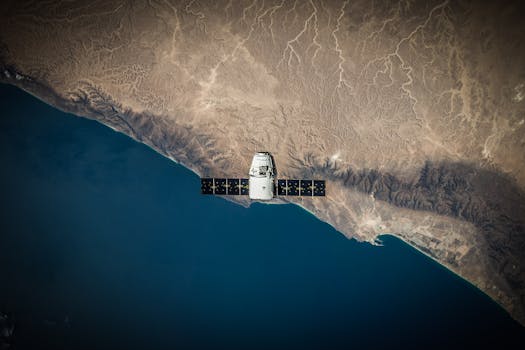The Future of Satellites: Revolutionizing Global Connectivity

The Future of Satellites: Revolutionizing Global Connectivity
The future of satellites is transforming the way we communicate, navigate, and understand our planet. With advancements in space technology, satellites are becoming increasingly important for global connectivity, remote sensing, and scientific research. Satellites have been a crucial part of modern technology for decades, and their impact is only expected to grow in the coming years.
Introduction to Satellites

Satellites are objects that orbit around a celestial body, such as the Earth. They can be natural, like the Moon, or artificial, like the thousands of satellites that have been launched into space over the years. Artificial satellites are designed to perform a specific function, such as communicating with Earth, observing the environment, or navigating. They are typically launched into space using a rocket and then orbit around the Earth at an altitude of a few hundred to several thousand kilometers.
Advancements in Satellite Technology

Recent advancements in satellite technology have led to the development of smaller, more efficient, and more affordable satellites. This has made it possible for more countries and companies to launch their own satellites, increasing global access to space. One of the most significant advancements is the development of cube satellites, also known as CubeSats. These tiny satellites are approximately the size of a shoebox and weigh only a few kilograms, making them much cheaper to launch than traditional satellites.
Another significant advancement is the development of constellations, which are groups of satellites that work together to provide global coverage. Constellations are being used for a variety of applications, including communication, navigation, and remote sensing. For example, the Starlink constellation, developed by SpaceX, aims to provide high-speed internet access to the entire world.
Applications of Satellites

Satellites have a wide range of applications, including communication, navigation, remote sensing, and scientific research. Communication satellites are used to transmit data, voice, and video signals around the world. They are essential for global connectivity, enabling people to communicate with each other across the globe. Navigation satellites, such as GPS, provide location information and timing signals, which are used for a variety of applications, including aviation, maritime, and land transportation.
Remote sensing satellites are used to observe the environment, monitoring factors such as climate change, deforestation, and natural disasters. They provide valuable data for scientists, policymakers, and emergency responders. Scientific research satellites are used to study the universe, from the Earth’s magnetic field to the far reaches of the cosmos. They have led to numerous breakthroughs in our understanding of the universe and have paved the way for future space exploration.
Challenges and Opportunities

Despite the many benefits of satellites, there are also challenges and opportunities that need to be addressed. One of the biggest challenges is the growing amount of space debris in Earth’s orbit. As more satellites are launched, the risk of collisions and other accidents increases, posing a threat to the entire satellite ecosystem. To mitigate this risk, companies and governments are developing new technologies and regulations to ensure sustainable space practices.
Another challenge is the need for greater international cooperation and regulation. As the number of satellites increases, so does the risk of conflicts and interference. To address this, governments and international organizations are working together to develop new regulations and standards for satellite operations. Despite these challenges, the future of satellites is full of opportunities. As technology continues to advance, we can expect to see new and innovative applications of satellites, from satellite-based internet to satellite-powered propulsion systems.
See more:





